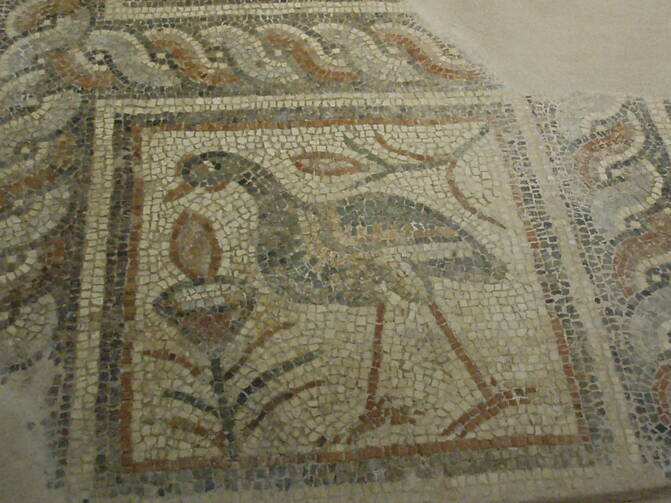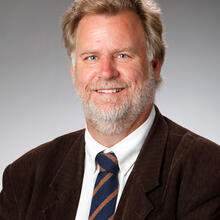In January 2012, I began blogging a commentary on the Gospel of Mark, available at the Bible Junkies blog and now at America Magazine, which I completed in March 2013. From March to May 2013, I blogged a commentary on the Letter of Jude and links to each entry are available here. My somewhat ambitious goal is to write an online commentary on every New Testament document, though I have given myself the equally ambitious time period of 15-20 years to complete the task. I hope the internet is still with us in 15 years as I do not know if I will be up to a shift in medium one more time.
The third online Bible Junkies Commentary, which begins with this post, will be a study of Paul’s first letter to the Thessalonians. Of the extant letters of Paul, those to which we have access, 1 Thessalonians is the earliest. As the earliest of Paul’s letters it is highly significant for setting the stage for Paul’s entire corpus and for introducing us to his style and a number of theological themes which will continue to pop up throughout all of his letters. In addition, it is one of his warmest letters and his affection is made known to his “children” in Thessalonica in a number of different ways in this letter.
As with Jude, the study of 1 Thessalonians will be in the form of a more traditional commentary, though the introductory questions of authorship, date and the location are not as difficult as with the letter of Jude. We know who wrote the letter, we know basically when it was written and we know to whom it was written. The introductory matters in this case will involve more a breaking down of the situation in Thessalonica, as we know it from Acts of the Apostles, and that of Paul and his companions. The basic Greco-Roman form of the letter will also be given, as with Jude, and then the bulk of the comments will center on the meaning and the purpose of this letter. Finally, comments at the end will concentrate on the message of the letter for the 21st century Church and Christian. Since there are no questions regarding the Pauline authorship of 1 Thessalonians, these issues will be dealt with when we come to letters in the Pauline corpus for which many scholars have raised issues of authorship. The problems concerning whether a letter is written by Paul are all best dealt with concretely and not abstractly. In the case of 1 Thessalonians, we can get right down to business.
1. Introductory Matters:
A word should be said about the language of “epistle” and “letter.” This distinction goes back to the work of Adolf Deissmann (see New Jerome Biblical Commentary, 769). A letter in this categorization is defined as a private, non-literary correspondence, while an epistle is a communication that is more literary in character, not necessarily occasioned by a particular event or situation and intended for a public audience. I will be using the terms interchangeably, since I consider that all of the letters in the New Testament, including the Pastoral epistles, were intended for public, not just private reading and that there is no definable difference between the literary character of “letters” and “epistles” in the New Testament.
Letters (or epistles) in the wider Greco-Roman world basically had four parts, though these can be sub-divided in numerous ways. The four basic parts are as follows:
1) Salutation (name(s) of writer(s) and recipient(s); greeting)
2) Thanksgiving
3) Body of the Letter
4) Closing: greeting.
Scholars of Paul often offer a number of other subdivisions and I will give a couple of examples to make this clear:
1) Salutation (name(s) of writer(s) and recipient(s); greeting)
2) Thanksgiving
3) Opening of the Body of the Letter
4) Body of the Letter (usually in two parts, theoretical and practical)
5) Closing of the Body of the Letter (often with the promise of a visit)
6) Ethical Instructions (‘Paraenesis’)
7) Closing: greetings; doxology; benediction (John Ziesler, Pauline Christianity, 7)
And:
1) Salutation: a) sender; b) recipient; c) greeting
2) Thanksgiving: (Prayer)
3) Body of the Letter (Paraenesis: Ethical Instruction and Exhortation)
4) Closing commands
5) Conclusion: a) peace wish; b) greetings; c) kiss; d) close (grace; benediction) (Calvin Roetzel, The Letters of Paul: Conversations in Context, 53-54)
For the letters of Paul, I have created a hybrid scheme based on the work of these scholars and my own understanding of Paul’s letters:
1) Salutation: a) sender; b) recipient; c) grace;
2) Thanksgiving: This often contains intentions for the entire letter and a prayer for the recipients;
3) BodyoftheLetter: often contains two parts, though not necessarily neatly divided: a) theological teaching and instruction, especially regarding errors in belief and practice; b) Paraenesis: Ethical Instruction and Exhortation;
4) ClosingoftheBodyoftheLetter: Closing commands, often with the promise of a visit and greetings;
5) Closing: Conclusion might contain some or all of these elements: a) peace wish; b) greetings; c) kiss; d) close (grace; doxology; benediction) (Roetzel, 53-54;Ziesler, 7)
2. The Background to Paul’s Activity in Thessalonica
A) The History of the Mission to Thessalonica:Paul and Barnabas launched the “first missionary journey” at the instigation and guidance of the Holy Spirit according to Acts 13:1-3.[1] We have no letters which survive from this mission, which dates to the late 30’s and early 40’s. The second missionary journey (Acts 15:40 –18:22) begins with the “sharp disagreement” between Paul and Barnabas in Antioch concerning the role of John Mark based on some past actions. Paul travelled on with Silas (Silvanus) and later connected with Timothy when they were travelling in Derbe and Lystra. They then went to Philippi, Thessalonica, Beroea, Athens and Corinth. This is when we first start to get letters from Paul’s hand, and those of his co-workers. 1 Thessalonians is the first of these letters and Paul’s mission to Thessalonica is described in Acts.17
B) The Founding of the Church:Paul, along with Barnabas and Timothy, went to Thessalonica on the second missionary journey, departing from Philippi. They stayed in Thessalonica, which was a predominantly pagan community, but with a Jewish population, for a period of time which is undisclosed. The time period is certainly not the three weeks some scholars attribute to them on the basis of Acts 17: 3, which simply indicates the length of time Paul spent debating with the Jews in the Synagogue. Paul himself founded the church at this point (see 1 Thess. 1:4-10).
C) The Situation in Thessalonica: Paul and Silas left Thessalonica according to Acts of the Apostles when some of the Jewish population became disturbed by his preaching and joined with a pagan mob to seek out Paul. They did not find Paul or his companions, but they “attacked Jason's house” and then “they dragged Jason and some believers before the city authorities” (Acts 17:5-6). Paul, Timothy and Silas all arrived in Beroea, to the west of Thessalonica, and found a warm welcome from the Jewish community there. Some of the mob from Thessalonica followed them to Beroea, however, and according to Acts Paul was taken from the city to the coast and then escorted to Athens. Timothy and Silas followed Paul and left Beroea a short time later and met up with Paul in Corinth, to which he had traveled after a lukewarm reception by the Greek philosophers in Athens.
The first letter to the Thessalonians is sent from somewhere in Greece, probably Corinth, as Paul went there after his time in Athens. We can actually date this period with some certainty: 1 Thess. 2:17-3:13 shows that Paul was not long removed from the Thessalonians when he sent Timothy back to check on them from Athens. A sojourn in Athens is only accounted for in Acts 17 between Beroea and Corinth. Timothy and Silas had arrived from Macedonia some time earlier, prior to Gallio becoming proconsul in Corinth, which he was from the Autumn of 50 to 51 CE. Since Paul writes to the Thessalonians soon after Timothy and Silas left Thessalonica, and before Gallio was proconsul of Corinth, we can date this letter to the year 49 or early 50.
Next entry, we begin to look at the content of the letter.
John W. Martens
I invite you to follow me on Twitter @Biblejunkies
Please “Like” Biblejunkies on Facebook.
This entry is cross-posted at Bible Junkies
[1] On the basis of Acts of the Apostles, scholars often speak of “three missionary journeys.” Paul himself never uses this language, but it is a commonplace way to divide up Paul’s travels in Acts.








